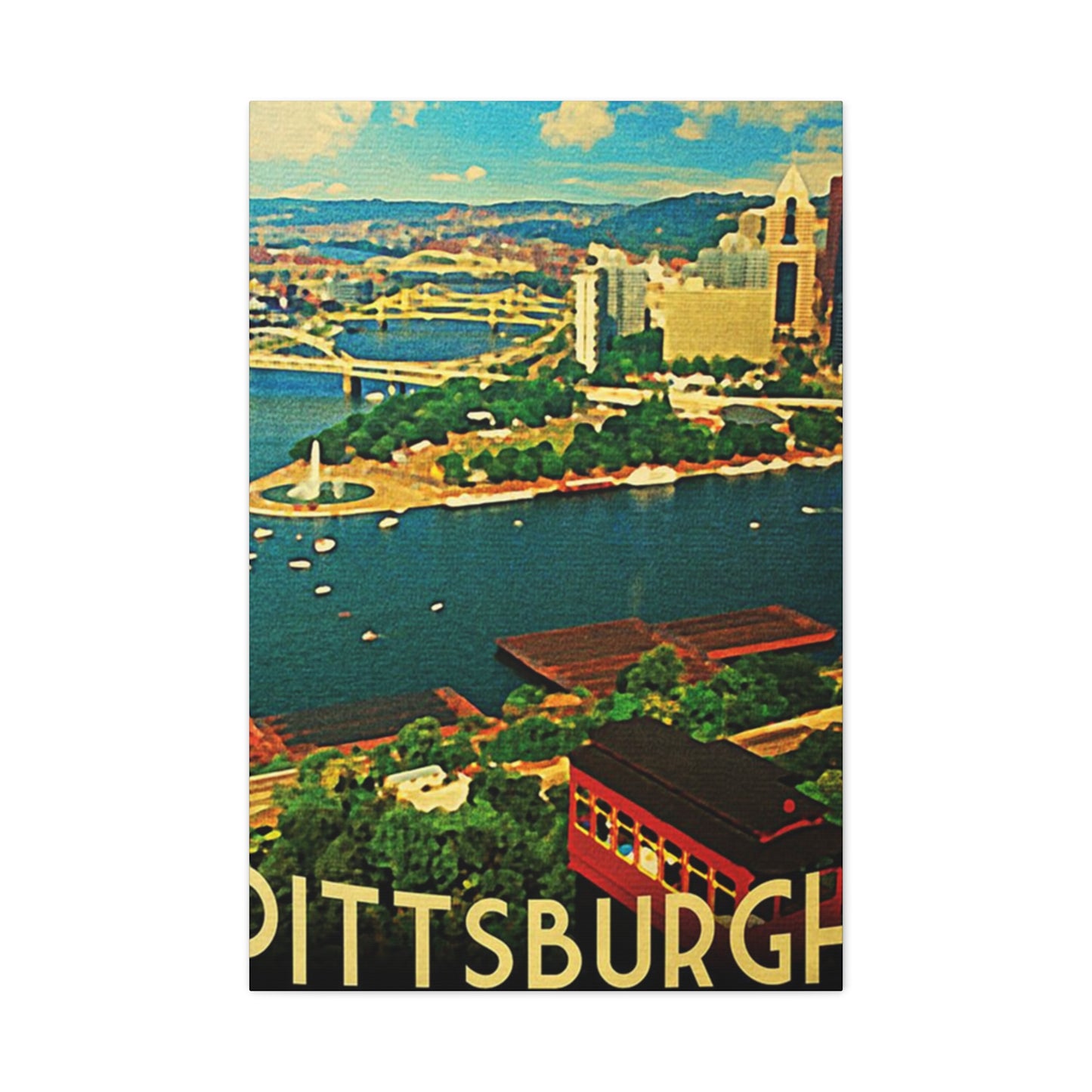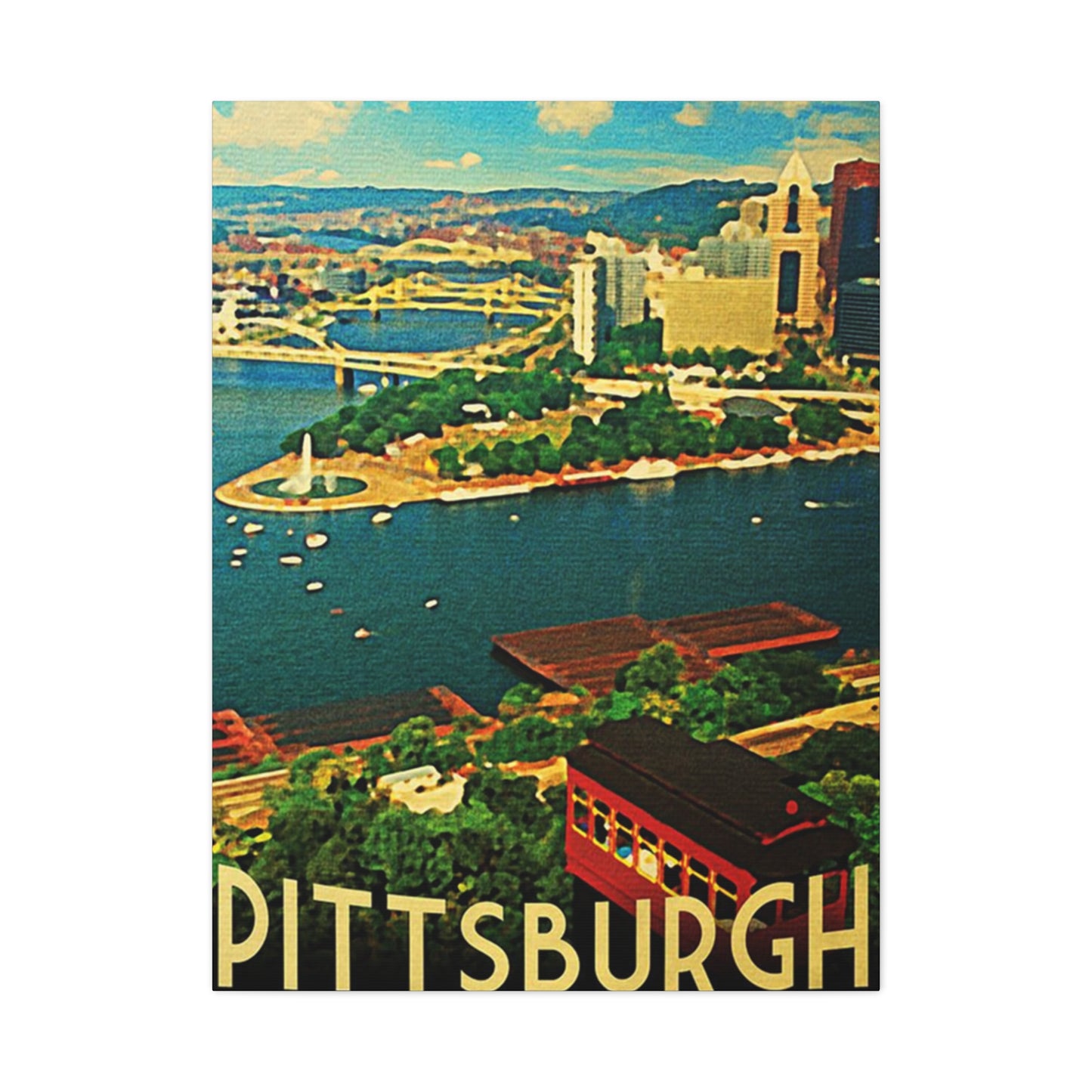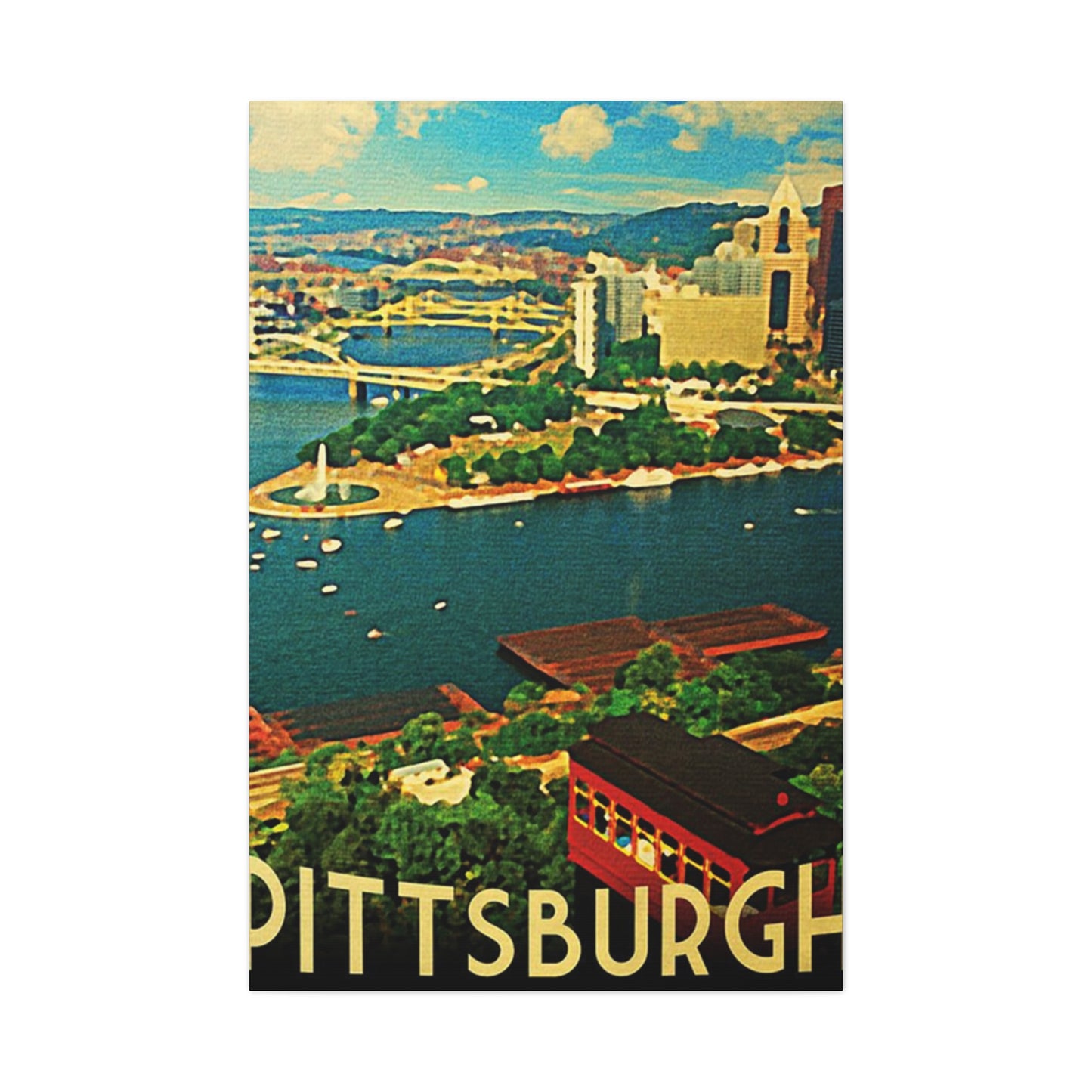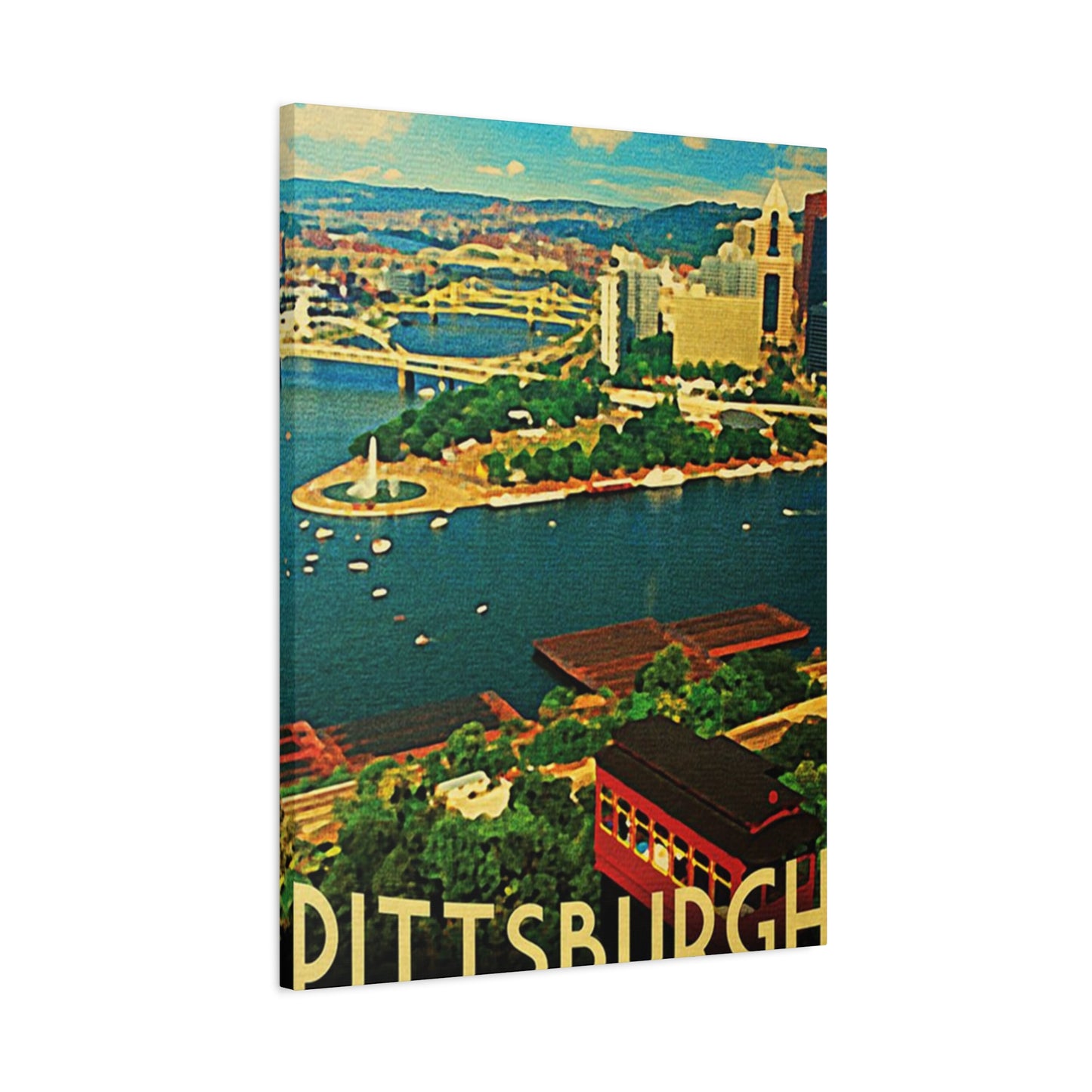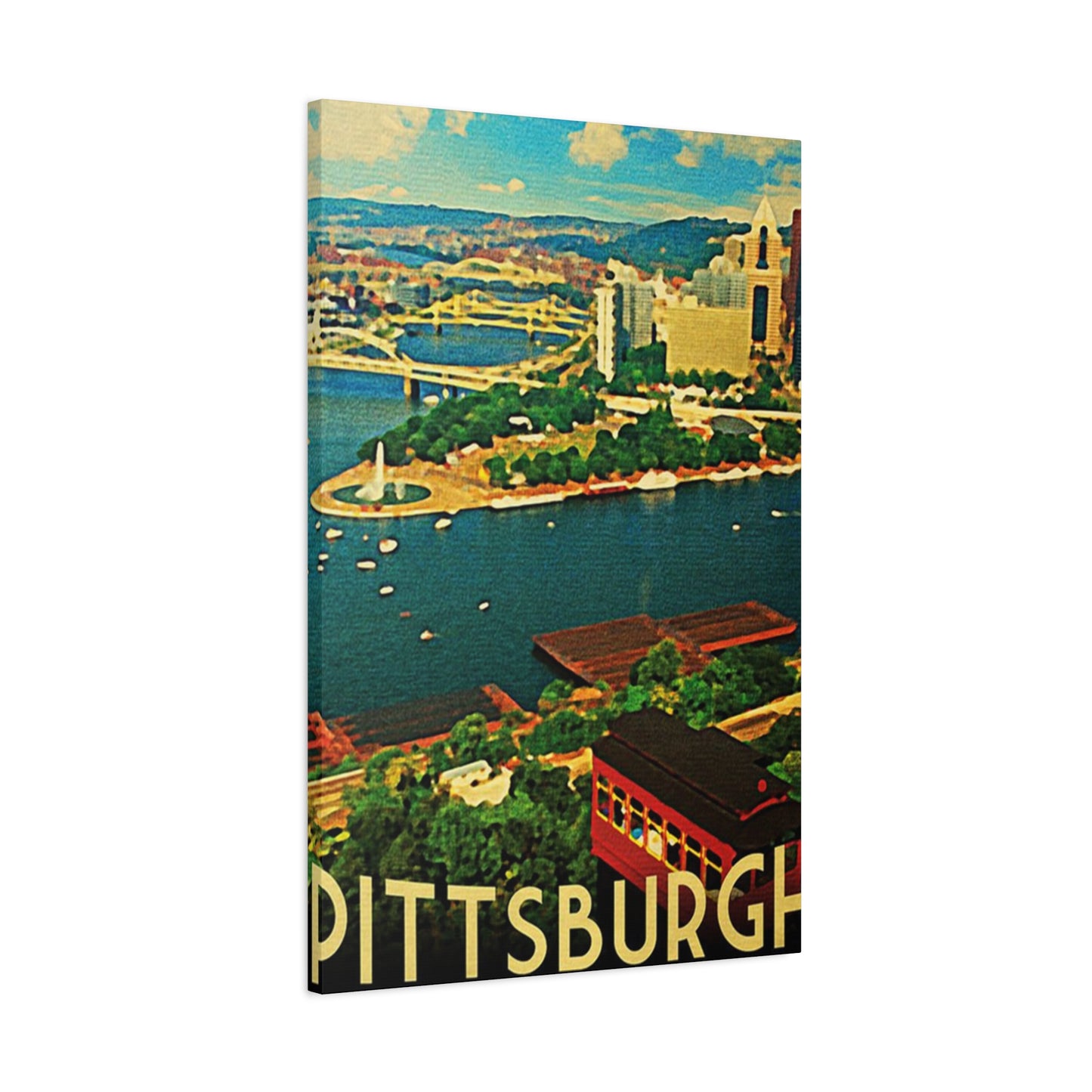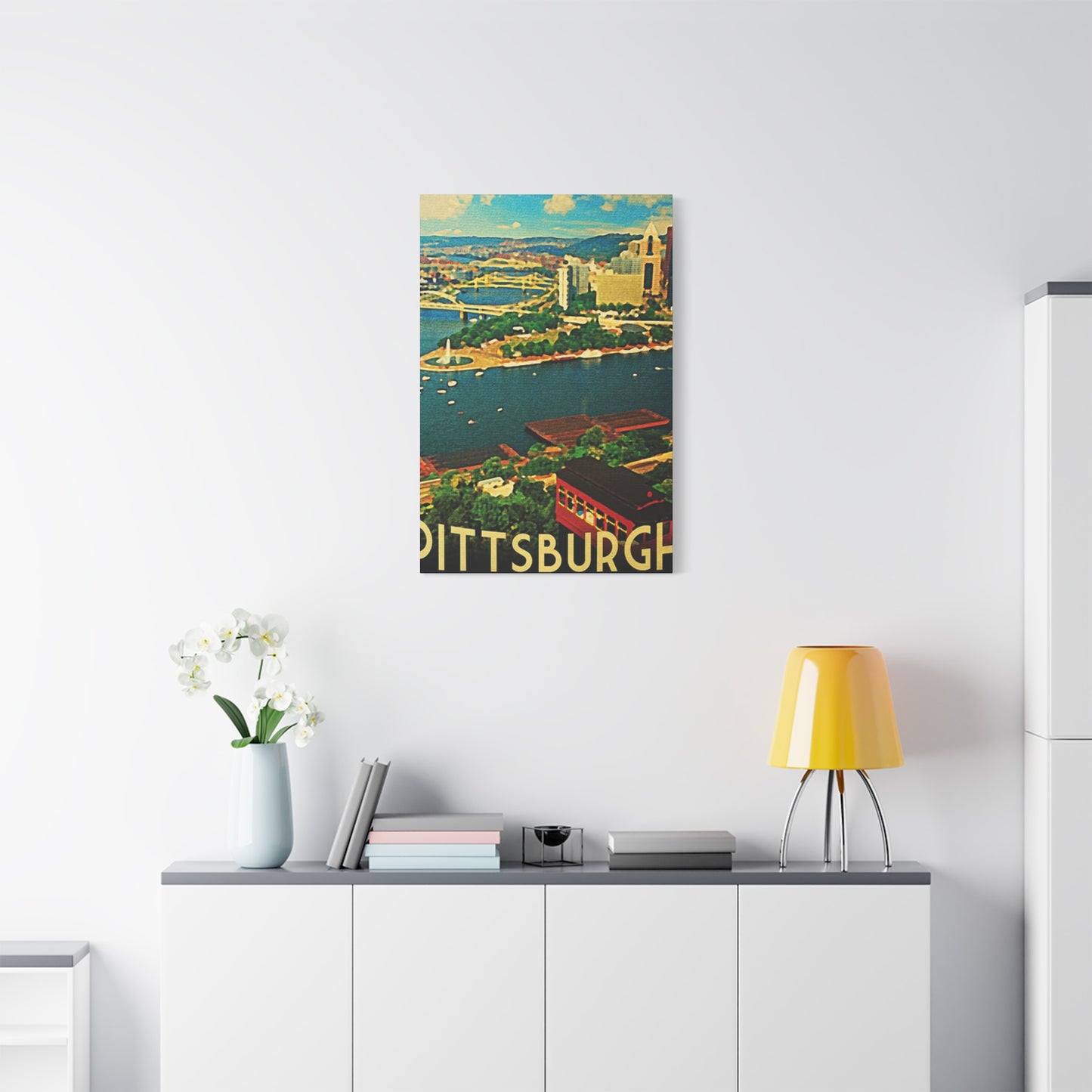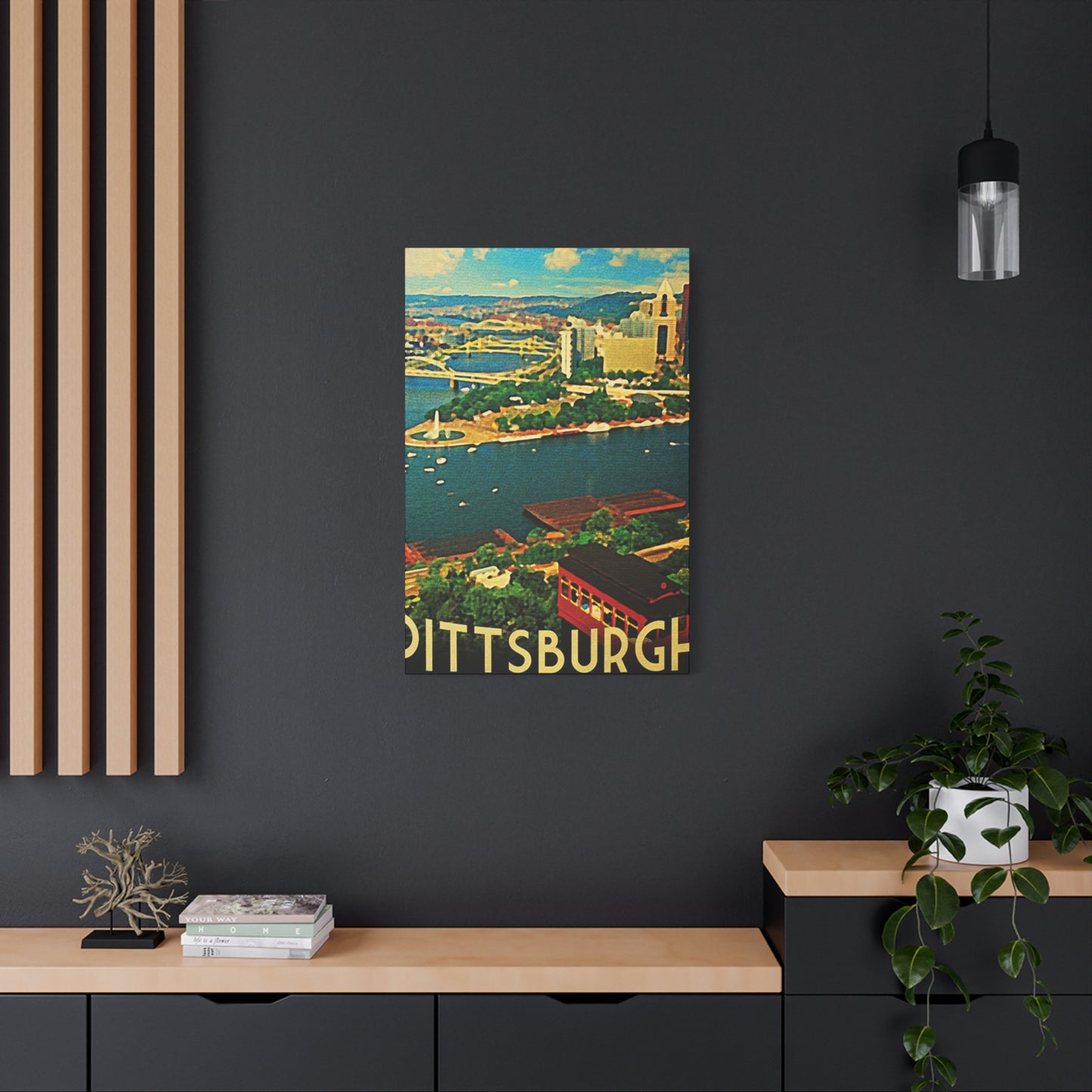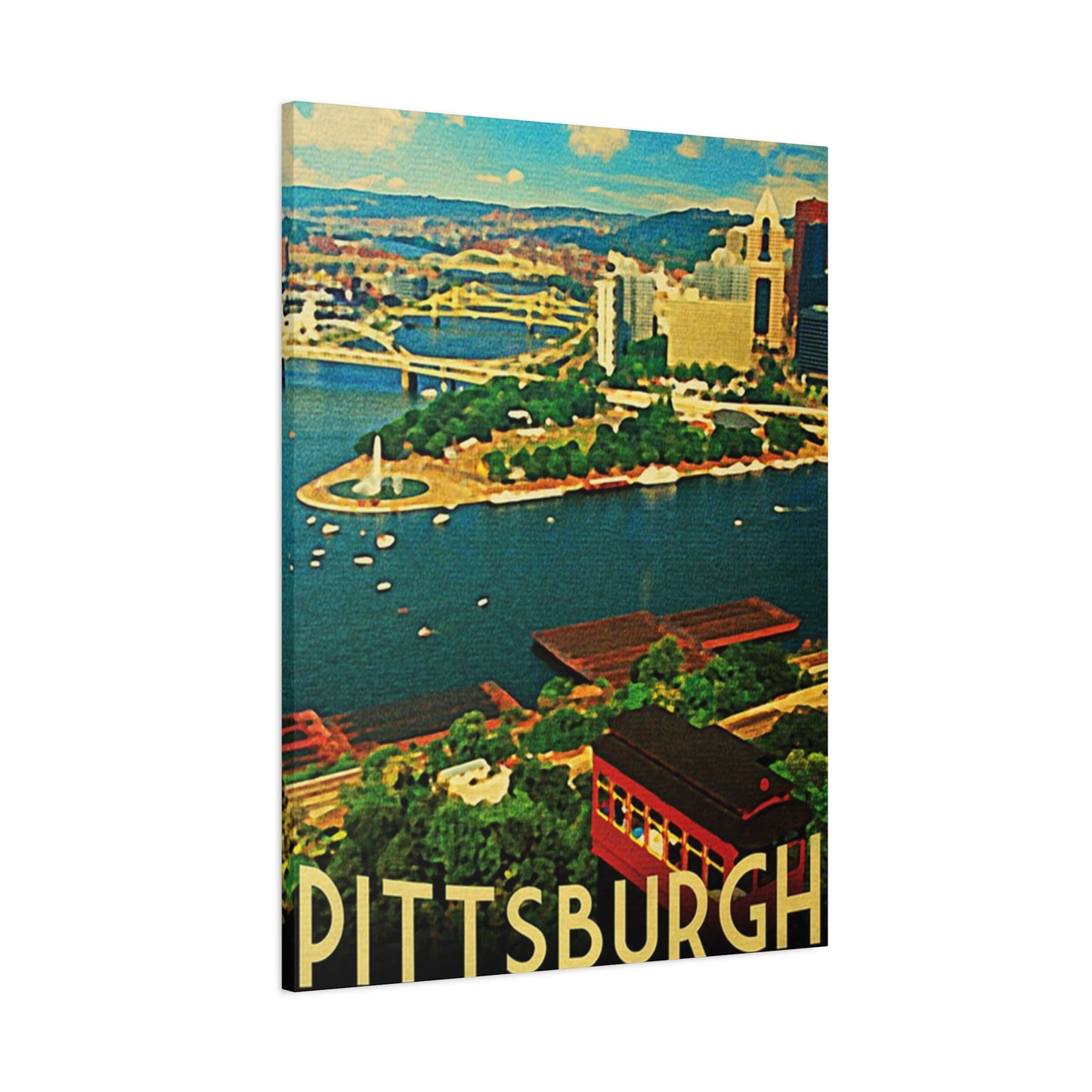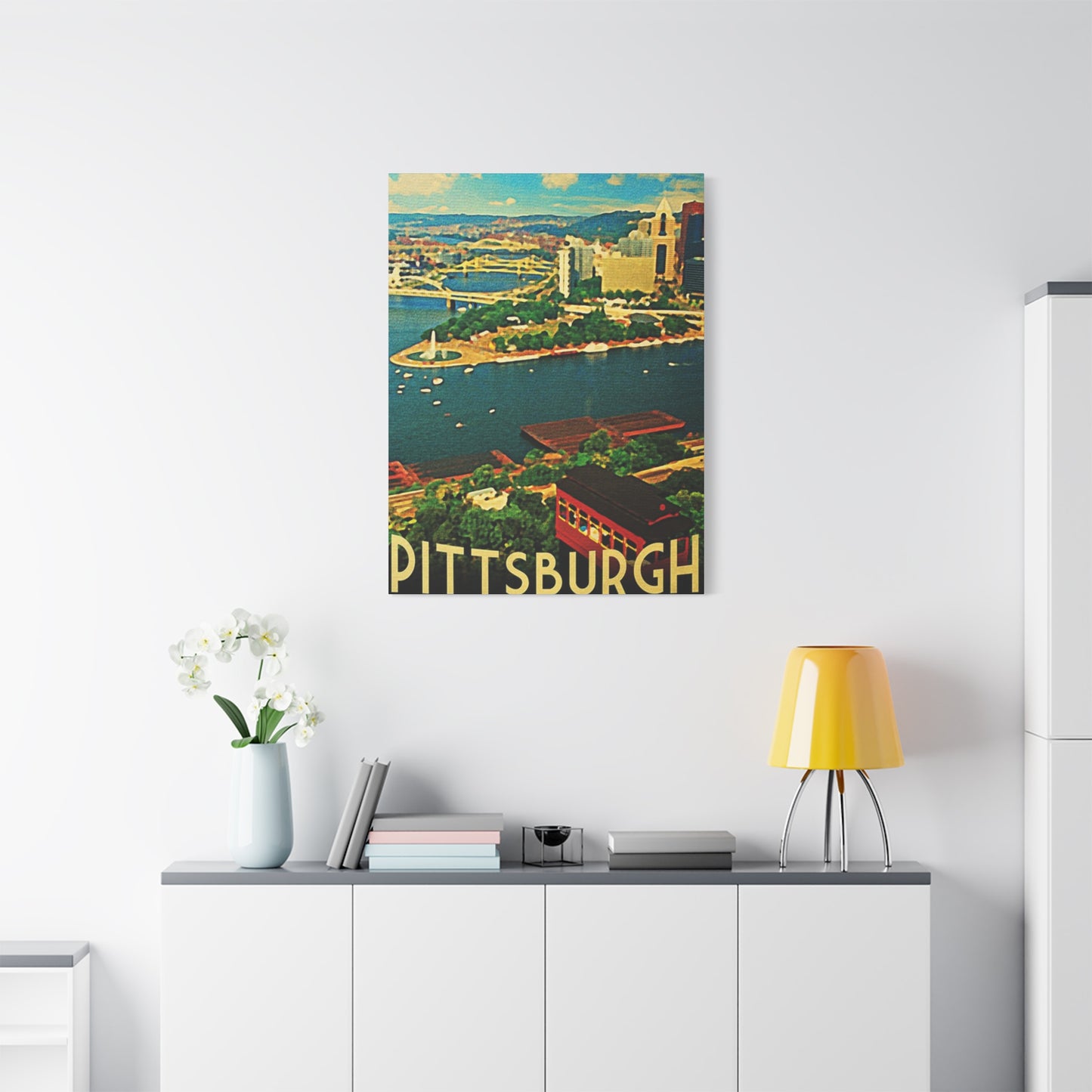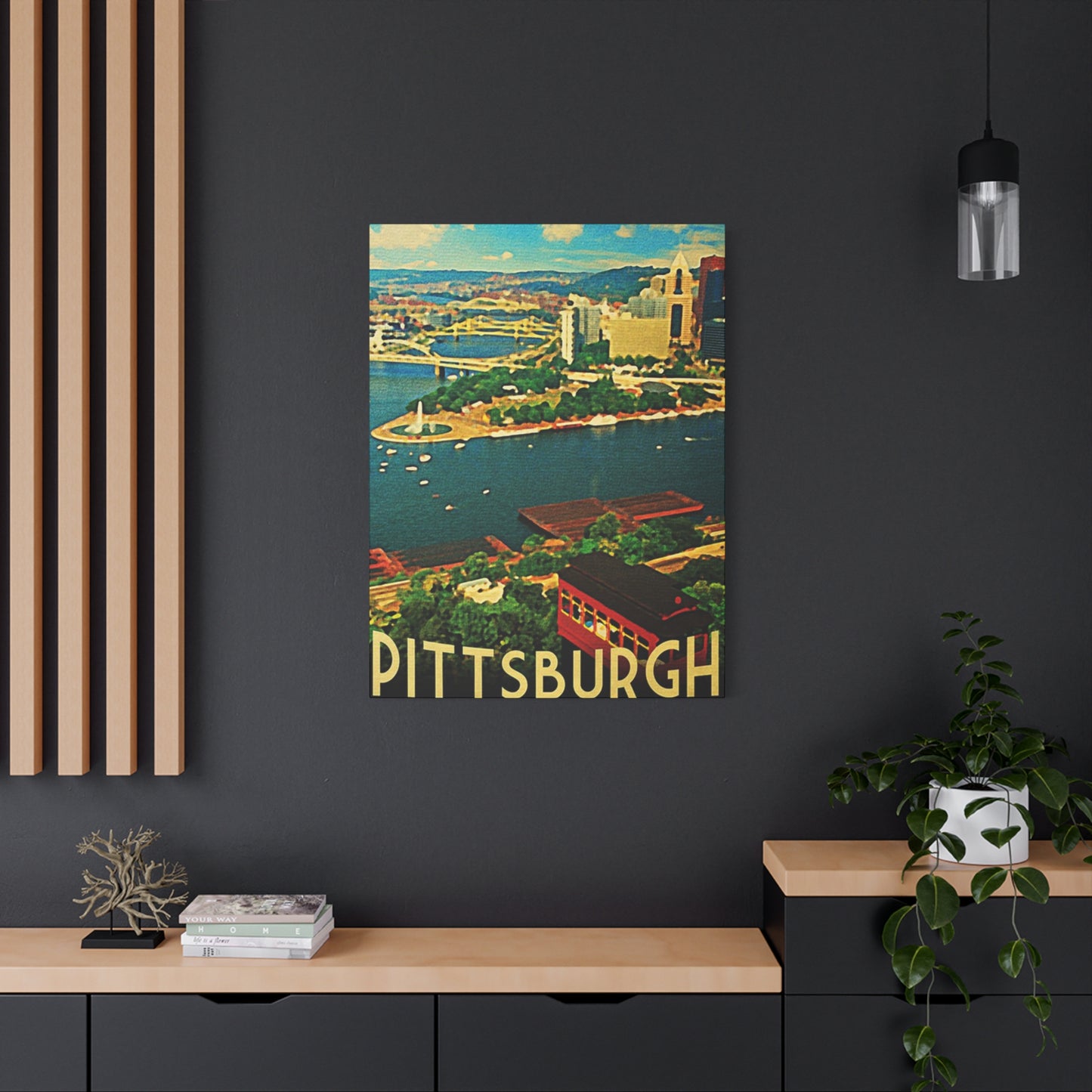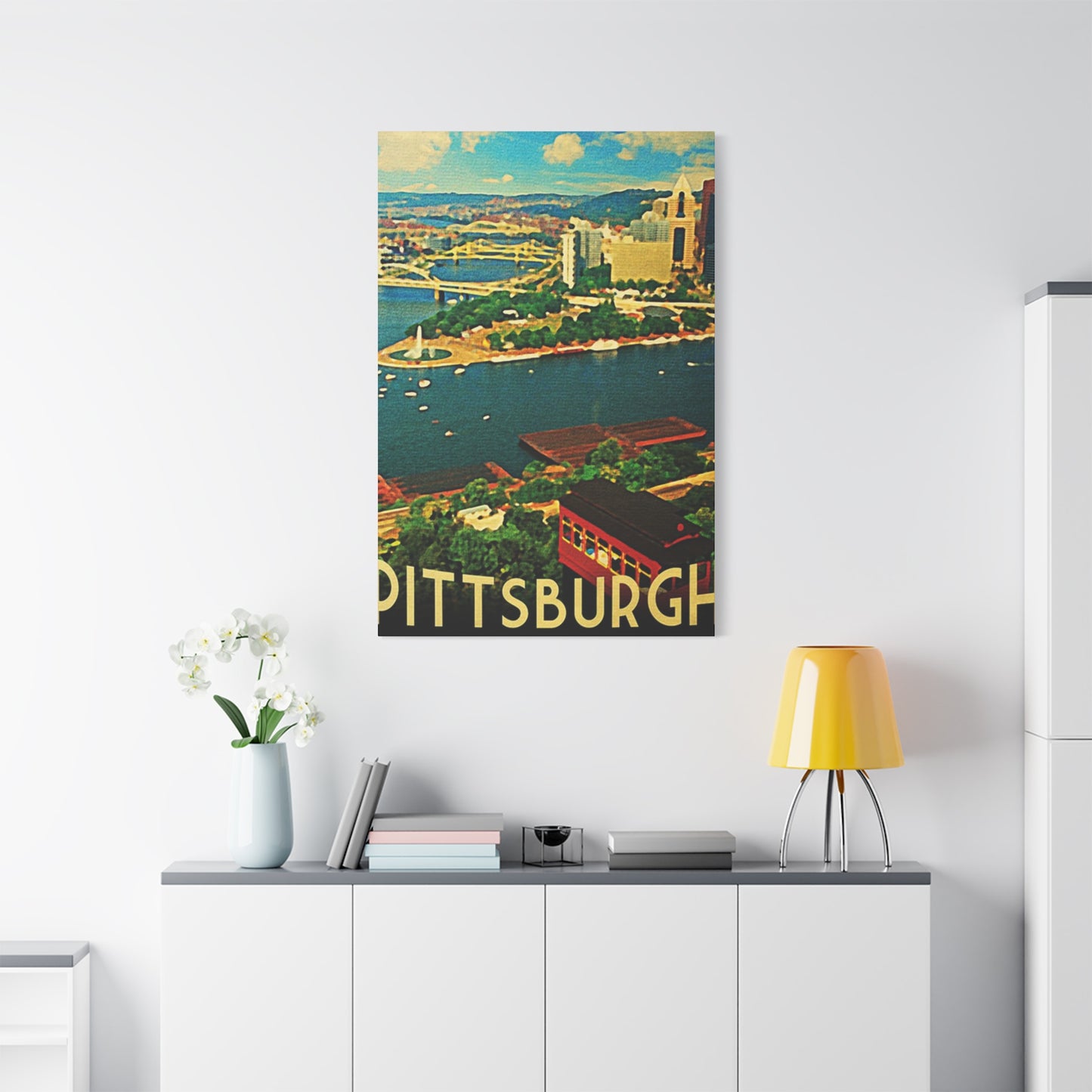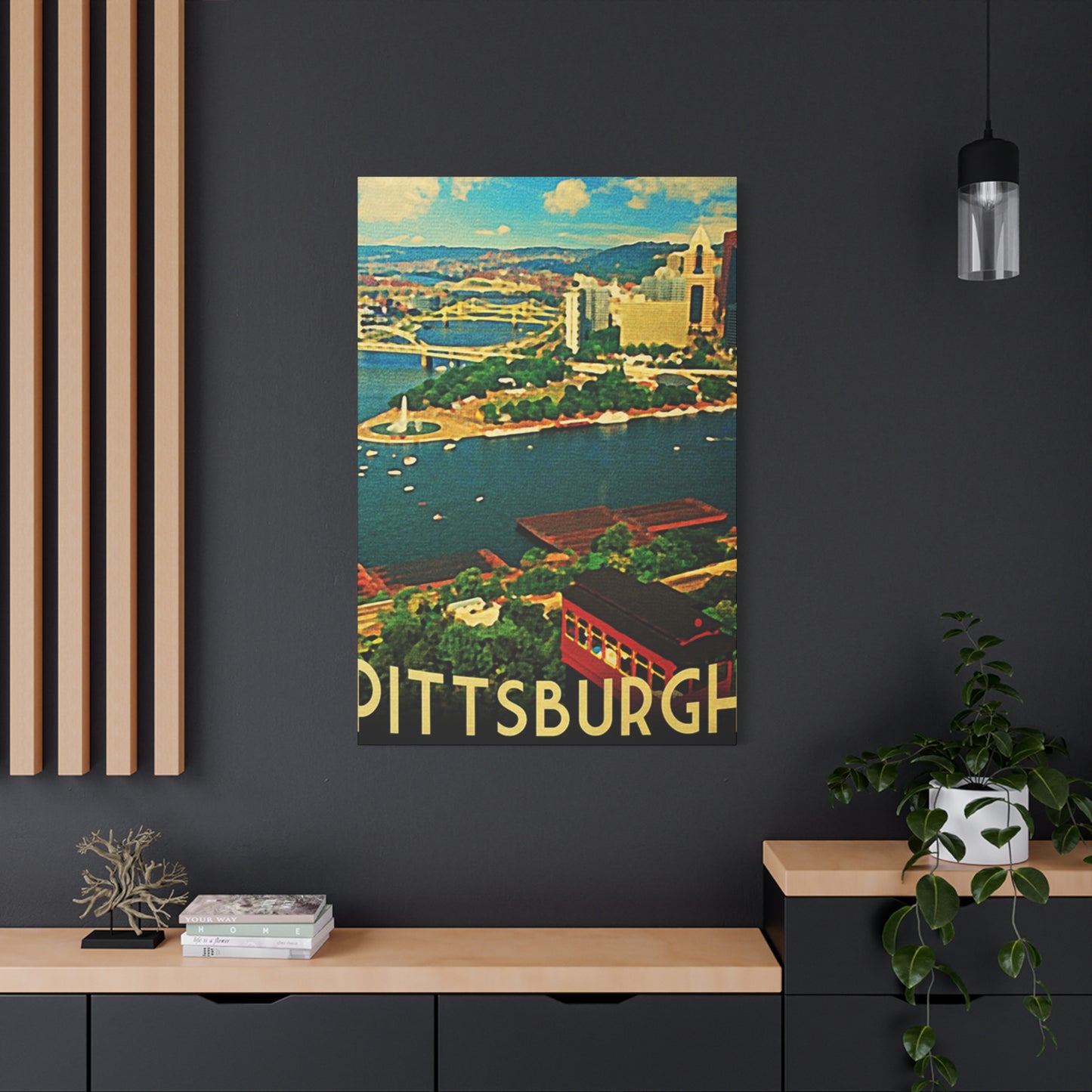Urban Majesty: Pittsburgh City View Poster Wall Art for Contemporary Décor
The allure of urban landscapes has captivated art enthusiasts and interior design aficionados for generations, and few cities offer the visual magnificence and architectural diversity quite like Pittsburgh. This remarkable metropolis, nestled at the confluence of three rivers, presents an extraordinary tapestry of bridges, skyscrapers, historic neighborhoods, and natural beauty that translates magnificently into artistic representations for contemporary living spaces. The transformation of cityscape imagery into decorative pieces has revolutionized how individuals connect with urban environments, bringing the vibrancy and character of metropolitan life directly into homes, offices, and creative spaces.
The resurgence of interest in metropolitan imagery reflects a broader cultural appreciation for the unique identity of American cities. Pittsburgh stands as a testament to urban renewal, architectural innovation, and community resilience. When transformed into visual art for residential and commercial environments, these characteristics become tangible expressions of regional pride and aesthetic sophistication. The convergence of traditional artistic techniques with modern printing technology has democratized access to high-quality urban landscape representations, making it possible for anyone to display professional-grade imagery that celebrates the distinctive character of this remarkable city.
Contemporary interior design increasingly emphasizes personalization and connection to place. Selecting artwork that reflects geographical identity or celebrates beloved urban environments has become an essential component of creating meaningful living spaces. The Steel City offers endless visual possibilities, from dramatic sunset silhouettes against towering structures to intimate street-level perspectives that capture the essence of neighborhood charm. Each artistic interpretation presents unique opportunities to infuse spaces with character, conversation-starting focal points, and representations of architectural achievement.
Architectural Storytelling Through Visual Representations
The built environment of Pittsburgh tells a compelling narrative of industrial heritage meeting contemporary innovation. When architects, artists, and photographers capture these structures through their lenses and creative interpretations, they preserve moments of urban evolution that might otherwise be forgotten. The transformation of steel mills into technology centers, the preservation of historic neighborhoods alongside modern developments, and the iconic bridges that define the city's silhouette all contribute to a visual vocabulary that resonates deeply with residents and admirers alike.
Artistic representations of urban architecture serve multiple purposes beyond mere decoration. They function as historical documents, capturing specific moments in a city's development. They act as conversation pieces, inviting viewers to share memories and experiences associated with familiar landmarks. They provide educational opportunities, encouraging observers to notice architectural details they might overlook in daily life. Most importantly, they create emotional connections between individuals and the places they love, transforming abstract concepts of community and belonging into tangible visual experiences.
The technical aspects of capturing urban landscapes require both artistic vision and technical expertise. Photographers must consider lighting conditions, compositional balance, perspective distortion, and atmospheric effects. The golden hour light that bathes structures in warm amber tones creates dramatically different impressions than the cool blues of twilight or the stark contrasts of midday sun. Seasonal variations further expand the creative possibilities, with autumn foliage framing steel and glass, winter snow softening industrial edges, spring blooms adding natural counterpoints to geometric precision, and summer vibrancy emphasizing the energy of metropolitan life.
The Evolution of Metropolitan Imagery in Residential Spaces
Historical precedents for displaying urban imagery date back centuries, with wealthy patrons commissioning vedute paintings of Venice, Rome, and other significant cities. These detailed topographical paintings served as both documentation and status symbols, demonstrating the patron's worldliness and appreciation for architectural achievement. The tradition continued through the development of photography, with urban scenes becoming increasingly accessible to broader audiences as reproduction technology advanced.
The contemporary market for urban landscape imagery reflects technological democratization and shifting aesthetic preferences. Digital printing technology enables reproduction quality that rivals original photographs, making museum-caliber images available at accessible price points. This accessibility has transformed interior design possibilities, allowing individuals to curate gallery-quality collections without requiring substantial financial investment. The variety of available formats, from traditional framed prints to stretched materials ready for immediate display, accommodates diverse installation preferences and spatial requirements.
Material selection significantly impacts the final presentation of urban imagery. Traditional photographic paper offers exceptional detail and tonal range, particularly suited for black and white compositions that emphasize architectural form through contrast and texture. Canvas materials provide textural interest and artistic character, with the woven surface adding tactile dimension that complements the subject matter. Metal prints deliver contemporary aesthetics with vibrant color saturation and remarkable durability, particularly effective for modern architectural subjects. Acrylic mounting creates depth and luminosity, enhancing color vibrancy while protecting the image behind clear protective layers.
The size and scale of urban landscape artwork dramatically affects its impact within interior environments. Large-scale pieces create commanding focal points that anchor entire rooms, establishing mood and directing attention. They work particularly well in spaces with high ceilings or expansive wall areas where smaller pieces might appear lost or insignificant. Medium-sized works offer versatility, functioning effectively as standalone statements or components of larger gallery arrangements. Smaller pieces provide intimate viewing experiences and work beautifully in groupings that tell visual stories through sequential or thematic relationships.
Illuminating the Steel City Through Atmospheric Conditions
The interplay between natural light and urban structures creates infinite variations in mood and visual character. Dawn breaking over the city presents soft, ethereal qualities as morning mist rises from the rivers, diffusing light through atmospheric moisture and creating dreamlike impressions of familiar landmarks. The structures emerge gradually from darkness, their forms initially suggested through silhouette before details become visible as illumination strengthens. This transitional period offers photographers and artists opportunities to capture cities in states of becoming, suspended between night and day, industrial past and technological future.
Midday illumination provides clarity and definition, revealing architectural details with precision and rendering colors with accuracy. The overhead sun eliminates the long shadows that characterize morning and evening hours, creating different compositional opportunities focused on form, texture, and spatial relationships. Cloudy conditions during these hours provide natural diffusion, softening contrasts and creating even illumination ideal for capturing architectural details without harsh shadows or blown highlights. These conditions particularly benefit documentation-focused imagery intended to showcase structural elements clearly.
Evening transformation represents one of the most dramatic periods for urban photography and artistic interpretation. As natural light fades and artificial illumination activates, cities undergo remarkable metamorphosis. Office towers become vertical landscapes of illuminated windows, their patterns revealing the human activity within. Street lights create rhythmic punctuation along thoroughfares and bridges. Architectural lighting highlights significant structures, drawing attention to historical importance or design distinction. The rivers reflect these lights, doubling visual impact and adding dynamic elements as water movement creates shimmering, ever-changing patterns.
Seasonal atmospheric variations introduce additional layers of visual interest and emotional resonance. Autumn foliage provides warm color contrasts against steel and glass, softening industrial edges with organic forms. Winter snow accumulation transforms urban landscapes into monochromatic studies of form and light, emphasizing geometric relationships and revealing structural essence. Spring renewal introduces fresh greens and blooming elements that frame architectural subjects with natural beauty. Summer conditions offer long daylight hours and intense colors that emphasize urban energy and vitality.
Regional Identity and Cultural Connection Through Artistic Expression
The relationship between residents and their city runs deeper than mere geographical proximity. Urban environments shape individual identities, inform cultural perspectives, and provide frameworks for understanding community and belonging. Displaying artistic representations of familiar landscapes reinforces these connections, transforming abstract concepts of regional identity into daily visual reminders of place-based affiliation. For those who have relocated from beloved cities, such imagery provides tangible links to formative experiences and cherished memories.
The psychological impact of surrounding oneself with meaningful imagery extends beyond simple nostalgia. Environmental psychology research demonstrates that visual elements in living spaces significantly influence mood, stress levels, and overall wellbeing. Familiar landmarks and beloved cityscapes trigger positive associations and memories, creating comfort and connection within interior environments. These effects prove particularly valuable in contemporary life, where many individuals spend substantial time indoors and benefit from visual reminders of the broader world beyond immediate surroundings.
Cultural pride finds natural expression through displays of regional imagery. For Pittsburgh natives and long-term residents, artwork celebrating the city's distinctive character demonstrates community affiliation and local pride. Visitors and newer residents use such displays to signal their appreciation for their adopted home and integration into local culture. In professional environments, regional imagery communicates organizational connections to place, emphasizing local roots and community engagement. This visual communication operates subtly but effectively, conveying messages about values, priorities, and identity.
The educational dimension of urban landscape artwork deserves recognition alongside aesthetic and emotional considerations. Children growing up surrounded by images of their city develop visual literacy regarding local architecture and geography. They learn to recognize significant landmarks, understand spatial relationships, and appreciate architectural diversity. Adults benefit from similar exposure, often discovering details and perspectives on familiar scenes that daily familiarity obscures. This educational function transforms decorative objects into tools for developing deeper environmental awareness and appreciation.
Design Integration Strategies for Metropolitan Artwork
Successful incorporation of urban landscape imagery into interior environments requires thoughtful consideration of multiple factors. The relationship between artwork and surrounding design elements determines whether pieces enhance or clash with existing aesthetics. Color palette coordination represents the most obvious consideration, with artwork tones either complementing or providing deliberate contrast against wall colors, furnishings, and accessories. Monochromatic urban scenes offer tremendous versatility, working effectively across diverse color schemes without competing for visual attention.
Stylistic consistency contributes to cohesive interior environments while allowing for individual expression within established parameters. Contemporary urban photography pairs naturally with modern furniture featuring clean lines and minimal ornamentation. Historic neighborhood scenes complement traditional design elements, creating dialogue between past and present. Abstract interpretations of urban landscapes bridge contemporary and traditional aesthetics, offering visual interest without requiring strict stylistic alignment. Mixed-style approaches can succeed when unified through consistent framing, matting, or installation patterns that create intentional curatorial relationships.
Spatial considerations extend beyond simple size matching. The viewing distance for artwork influences appropriate scale selection, with larger pieces suited to spaces where viewers experience them from across rooms, while smaller works function better in intimate settings with closer viewing distances. Ceiling height affects vertical placement, with higher ceilings accommodating larger pieces and allowing for elevated hanging that maintains appropriate viewing angles. Furniture placement beneath or adjacent to artwork creates contextual relationships that enhance or diminish visual impact, requiring coordination between functional arrangements and aesthetic presentations.
Lighting design dramatically affects how viewers experience urban landscape artwork. Natural light sources introduce dynamic variation throughout the day, with changing illumination creating different impressions of static images. This variability adds interest but requires consideration of potential fading from prolonged sun exposure, particularly for pieces using traditional printing methods susceptible to UV degradation. Artificial lighting provides control and consistency, with options ranging from overhead illumination to dedicated picture lights that highlight individual pieces. The color temperature of light sources affects perceived colors within artwork, with warmer tones enhancing certain palettes while cooler illumination benefits others.
Excellence in Urban Landscape Reproduction
The transformation of photographic images into display-ready artwork involves sophisticated technical processes that determine final quality. Digital image capture provides the foundation, with high-resolution sensors recording millions of pixels that preserve fine details essential for large-scale reproduction. Professional photographers utilize specialized equipment including full-frame cameras, premium lenses designed for architectural photography, and accessories like polarizing filters that manage reflections and enhance sky saturation. The technical mastery required to capture urban landscapes extends beyond equipment to encompass understanding of exposure, dynamic range management, and compositional principles.
Post-processing represents a crucial phase where raw captures transform into finished images ready for printing. Digital editing software enables precise adjustments to exposure, contrast, color balance, and selective enhancements that optimize visual impact. Architectural photography particularly benefits from perspective correction tools that address the keystoning effect caused by tilting cameras upward to capture tall structures. These corrections ensure that buildings appear with parallel vertical lines rather than converging toward vanishing points, creating more natural and professional appearances.
Print production technology has advanced remarkably, with modern systems achieving color accuracy, tonal gradation, and detail reproduction that rivals traditional darkroom processes. Large-format printers accommodate substantial sizes while maintaining resolution across the entire image area. Ink formulations utilizing pigment-based compositions provide longevity measured in decades rather than years, ensuring that properly displayed pieces maintain their original appearance throughout extended ownership. Color management systems ensure consistency between digital files and physical prints, matching the artist's vision with the final product delivered to customers.
Material substrate selection influences both aesthetic character and practical durability. Premium photographic papers provide smooth surfaces ideal for maximum detail reproduction and accurate color rendering. Textured papers introduce artistic character through visible surface patterns that add tactile interest. Canvas materials offer classic artistic associations and work beautifully for pieces intended to evoke painterly qualities. The printing process differs across substrates, with each material requiring specific ink formulations, color profiles, and handling procedures to achieve optimal results. Understanding these technical considerations helps consumers make informed selections aligned with their aesthetic preferences and practical requirements.
Bridging Historic Character with Contemporary Expression
Pittsburgh's architectural landscape presents remarkable diversity spanning multiple centuries and stylistic movements. Historic structures representing Victorian, Romanesque, and Art Deco periods coexist with contemporary glass towers and innovative modern designs. This temporal layering creates visual richness that artists and photographers explore through various interpretive approaches. Some focus exclusively on historic elements, celebrating preservation efforts and architectural heritage. Others emphasize contemporary structures, showcasing ongoing development and technological advancement. The most compelling work often juxtaposes old and new, revealing visual dialogues between different eras within single compositions.
The industrial heritage that defined the city's identity for generations provides powerful subject matter for artistic interpretation. Former mills, warehouses, and manufacturing facilities represent significant architectural achievements in their own right, with massive scale, functional beauty, and engineering innovation. Many of these structures have found new purposes through adaptive reuse, transforming from industrial production to residential lofts, creative studios, technology offices, and cultural institutions. Artistic documentation of these transformations preserves historical memory while celebrating urban renewal and architectural creativity.
Neighborhood character contributes essential elements to the city's visual identity beyond downtown commercial districts. Residential areas feature distinctive architectural styles reflecting various immigrant communities and historical development patterns. Row houses demonstrate efficient urban planning and community-oriented design. Tree-lined streets provide natural beauty that softens urban density. Local commercial corridors showcase small-scale commercial architecture with human proportions and pedestrian orientation. Artists who venture beyond iconic landmarks to capture neighborhood essence provide valuable documentation of lived urban experience that complements grander architectural statements.
The engineering achievements represented by the city's numerous bridges deserve recognition as both functional infrastructure and artistic subjects. These structures demonstrate remarkable engineering innovation while creating sculptural forms that define skyline silhouettes. Their illumination at night transforms them into linear light sculptures spanning rivers. Their reflection in water doubles visual impact and adds dynamic elements through movement and changing conditions. The variety of bridge designs throughout the metropolitan area provides endless compositional possibilities, from symmetrical head-on perspectives emphasizing geometric precision to oblique angles revealing structural complexity and spatial relationships.
Color Theory and Emotional Resonance in Urban Imagery
The psychological and emotional effects of color have been extensively studied, with findings applicable to artwork selection for interior environments. Warm color palettes featuring reds, oranges, and yellows create energetic, stimulating atmospheres associated with excitement, passion, and vitality. Urban scenes captured during golden hour naturally emphasize these warm tones, with sunset illumination bathing structures in amber and crimson hues. These pieces work effectively in social spaces where conversation and activity represent primary functions, though their stimulating qualities may prove less suitable for bedrooms or other environments intended for relaxation.
Cool color palettes dominated by blues, greens, and purples produce calming, contemplative moods associated with tranquility, stability, and introspection. Twilight photography emphasizes these cooler tones, with fading daylight creating deep blue skies and artificial lighting introducing varied color temperatures. Water features prominently reflect these cooler tones, particularly during evening hours when illuminated structures cast colored reflections across river surfaces. Cool-toned urban imagery functions beautifully in professional environments, bedrooms, and spaces designed for focused work or meditation.
Monochromatic approaches eliminate color considerations entirely, focusing viewer attention on form, texture, light, and composition. Black and white urban photography carries strong artistic associations with documentary photography traditions and fine art practices. The absence of color emphasizes architectural details, geometric relationships, and tonal gradations that color sometimes obscures. Dramatic contrast between deep shadows and brilliant highlights creates powerful visual impact. Subtle gradations through middle tones reveal nuanced details and textural variations. Monochromatic imagery offers remarkable versatility, coordinating effortlessly with any color scheme while maintaining strong visual presence.
Selective color techniques combine monochromatic and full-color approaches, desaturating most image elements while preserving color in strategic areas. This approach directs viewer attention to specific subjects while maintaining overall compositional context. A single colored element within otherwise monochrome compositions creates powerful focal points and symbolic emphasis. This technique works particularly effectively for highlighting architectural features, emphasizing specific landmarks, or drawing attention to human elements within urban environments. The dramatic contrast between colored and desaturated areas creates memorable visual impact that distinguishes pieces from conventional approaches.
Narrative Development Through Sequential Imagery
Gallery wall arrangements utilizing multiple related pieces enable complex storytelling impossible within single images. Sequential presentations might follow temporal progressions, showing the same location across different times of day or various seasons. This approach reveals transformation and change, demonstrating how lighting, weather, and seasonal conditions dramatically alter the character of static architectural subjects. Viewers gain appreciation for environmental variability and the dynamic nature of seemingly permanent structures.
Geographical progressions create visual journeys through urban environments, with sequential images depicting movement through neighborhoods, along riverfront paths, or ascending elevation changes. These arrangements allow viewers to experience the city spatially, understanding connections between districts and appreciating urban planning patterns. The progression might follow a specific route familiar to residents, triggering memories of commutes, recreational activities, or significant personal experiences associated with particular locations. This geographical storytelling transforms wall arrangements into maps of memory and experience.
Thematic organization groups images based on shared subjects or concepts rather than temporal or geographical relationships. A collection focused exclusively on bridges celebrates engineering achievement while revealing design diversity across different structures. Architectural style groupings might compare historic and contemporary structures, examining how building design has evolved while identifying persistent regional characteristics. Neighborhood character studies reveal distinct identities within the broader urban fabric, showcasing cultural diversity and architectural variation across different districts.
Scale variation within multi-piece arrangements creates visual rhythm and hierarchy while accommodating different content types. Large anchor pieces establish primary focal points and set overall tone, while smaller supporting images provide detail, variation, and visual interest. This approach prevents monotony in grid arrangements while allowing flexibility in content selection. Mixed orientations combining vertical and horizontal formats add additional compositional complexity and visual interest. The careful balance between consistency and variation determines whether arrangements feel cohesive or chaotic, requiring thoughtful curation and installation planning.
Material Authenticity and Sustainable Production Practices
Contemporary consumers increasingly prioritize environmental responsibility in purchasing decisions, extending these values to decorative items and artwork. Sustainable production practices in the urban imagery market encompass multiple considerations from material sourcing through manufacturing processes to packaging and shipping methods. Responsible producers prioritize materials from sustainable sources, utilize production methods minimizing environmental impact, and implement business practices supporting long-term ecological health.
Paper products derived from responsibly managed forests carry certifications verifying sustainable harvesting practices. These certifications ensure that timber removal does not exceed regeneration rates and that forest ecosystems maintain their ecological functions. Recycled content papers reduce demand for virgin materials while diverting waste from landfills. The manufacturing processes for premium papers have evolved to reduce water consumption, minimize chemical usage, and improve energy efficiency. These advances enable production of high-quality materials with significantly reduced environmental footprints compared to historical practices.
Ink formulations have similarly improved regarding environmental impact and human health. Pigment-based inks offer archival longevity while avoiding heavy metals and toxic compounds found in earlier formulations. Water-based systems eliminate volatile organic compound emissions associated with solvent-based alternatives. The extended lifespan of pigment prints reduces replacement frequency, diminishing the cumulative environmental impact of producing, shipping, and disposing of artwork over time. This durability represents a form of sustainability through longevity, contrasting with disposable decorating approaches requiring frequent replacement.
Packaging materials increasingly utilize recycled content and biodegradable alternatives to traditional plastics. Corrugate shipping containers made from recycled paper protect products during transit while remaining recyclable at end of life. Biodegradable protective wrapping replaces plastic films that persist in landfills indefinitely. Local production and fulfillment reduce shipping distances and associated carbon emissions, particularly when producers operate regional facilities serving specific geographical markets. These logistical considerations significantly impact the overall environmental profile of decorative products.
Professional Installation and Preservation Techniques
Proper installation ensures that urban landscape artwork appears at its best while protecting pieces from damage. The fundamental consideration involves selecting appropriate hanging hardware matched to artwork weight and wall construction. Traditional drywall requires anchors distributing loads across larger areas than single nails or screws can support. Brick or concrete walls need specialized fasteners designed for masonry applications. Professional installation services assess structural requirements and utilize appropriate mounting systems ensuring secure, long-lasting installations.
Placement height significantly affects viewing experience and aesthetic impact. The standard recommendation positions artwork centers at approximately eye level for average-height adults, generally 57 to 60 inches from floor to center. This guideline requires adjustment based on ceiling height, furniture placement, and viewer expectations. Pieces hung above furniture should maintain appropriate spacing, typically 6 to 12 inches between furniture tops and artwork bottoms. Hallway installations might accommodate higher placement since viewers typically experience these pieces while standing and moving rather than seated. Stairway installations require careful consideration of sight lines from various positions along ascent or descent paths.
Protective measures extend the lifespan of urban landscape artwork while maintaining appearance. Glass or acrylic glazing protects paper-based pieces from atmospheric pollutants, humidity fluctuations, and physical contact. Museum-quality glazing incorporates UV filtering that blocks harmful wavelengths responsible for fading and color shifting. This protection proves essential for pieces displayed in locations receiving natural light, though even indoor lighting produces UV emissions over time. Canvas pieces generally display without glazing, though varnishing provides protection against dust accumulation and minor physical contact. Metal and acrylic prints incorporate protection through their substrate characteristics and manufacturing processes.
Environmental conditions within display locations influence artwork longevity. Excessive humidity promotes mold growth and paper deterioration while extremely dry conditions cause brittleness. Dramatic temperature fluctuations create expansion and contraction cycles stressing materials and potentially damaging adhesives. Direct sunlight exposure accelerates fading even in pieces with UV-protective glazing. Proximity to heat sources like fireplaces, radiators, or heating vents creates localized extreme conditions harmful to artwork. Understanding these factors enables informed placement decisions that balance aesthetic preferences with preservation requirements.
Considerations and Investment Value
The financial aspects of acquiring urban landscape artwork vary tremendously based on multiple factors including artist recognition, edition limitations, size, materials, and framing specifications. Limited edition prints from established photographers command premium prices reflecting scarcity and artist reputation. Open edition reproductions offer accessibility at lower price points while maintaining quality standards. Original artworks represent the highest investment levels, with prices reflecting the unique nature of singular pieces and the time investment required for creation.
The relationship between price and value extends beyond initial purchase cost to encompass longevity, satisfaction, and potential appreciation. High-quality materials and production methods ensure that pieces maintain their appearance through years or decades of display. This durability provides better long-term value than inexpensive alternatives requiring replacement after short periods. The psychological and emotional value derived from displaying meaningful imagery should factor into economic assessments, though these subjective benefits resist quantification. The conversation-starting potential and social signaling functions of carefully selected artwork contribute additional value dimensions beyond purely aesthetic considerations.
Framing significantly impacts total investment while dramatically affecting presentation quality and preservation. Custom framing allows precise matching to artwork and surrounding décor while incorporating conservation-grade materials ensuring long-term protection. The cost of premium custom framing sometimes exceeds artwork prices themselves, particularly for larger pieces requiring substantial materials and labor. Ready-made framing options provide economy while accepting limitations in size availability and design selection. The increasing availability of high-quality ready-made options has expanded possibilities for budget-conscious consumers seeking professional presentation without custom framing expenses.
The secondary market for urban landscape photography and artwork remains relatively limited compared to fine art markets, making appreciation potential difficult to predict. Established photographers with consistent exhibition records and institutional recognition demonstrate stronger secondary market performance than emerging artists. Limited editions maintain value better than open editions due to scarcity. However, most consumers should view urban landscape artwork as decorative purchases providing aesthetic and emotional returns rather than financial investments expected to appreciate. This perspective allows focus on personal satisfaction rather than market performance speculation.
Digital Integration and Contemporary Display Technologies
Technological advancement has introduced alternatives to traditional static artwork through digital display systems. High-resolution screens enable rotation through extensive image libraries, providing variety impossible with physical prints. These systems appeal to individuals desiring frequent change or those struggling to select single images from extensive collections. The technology permits customization based on time of day, season, or mood, with automated systems cycling through curated selections. Integration with smart home systems allows voice control and synchronization with other environmental elements like lighting and audio.
The aesthetic considerations regarding digital displays differ from traditional artwork. Screen bezels create visible frames that some viewers find distracting compared to traditional matting and framing. Backlighting produces different visual character than reflected light illuminating physical prints, with increased brightness and different contrast characteristics. Power consumption represents an ongoing operational cost and environmental consideration absent from traditional artwork. The technology requires periodic upgrading as systems become obsolete, creating replacement cycles unlike traditional pieces remaining current indefinitely.
Hybrid approaches combine physical and digital elements, with some companies offering traditional prints complemented by digital components providing additional information or interactive features. QR codes embedded in framing or accompanying labels link to digital content including artist statements, location information, historical context, or related imagery. Augmented reality applications overlay digital information onto physical artwork when viewed through smartphones or tablets. These technological integrations appeal to viewers desiring deeper engagement with artwork beyond passive observation.
The purist perspective maintains that traditional physical artwork offers irreplaceable qualities including tactile character, material authenticity, and permanence that digital alternatives cannot replicate. The texture of canvas, the subtle sheen of photographic paper, and the dimensional quality of properly framed pieces contribute essential aesthetic elements absent from flat screens. The intentionality of selecting and committing to specific images holds value in an age of infinite digital options. These competing perspectives reflect broader cultural conversations regarding technology's role in aesthetic experiences and the relative value of digital versus physical objects.
Cultural Documentation and Historical Preservation
Urban landscape artwork serves documentary functions extending beyond aesthetic considerations. As cities evolve through development, demolition, and renovation, photographic records preserve visual information about structures and neighborhoods that may eventually disappear. Historic images gain value over time as primary source documentation of urban conditions, architectural styles, and community character from specific periods. Artists and photographers creating contemporary urban documentation contribute to future historical records, though they cannot anticipate which aspects of current environments will prove most significant to later generations.
The relationship between artistic interpretation and documentary accuracy presents interesting tensions. Pure documentation prioritizes factual representation over aesthetic considerations, capturing scenes with minimal editorial intervention. Artistic approaches manipulate reality through selective framing, strategic timing, post-processing enhancement, and compositional choices emphasizing certain elements while minimizing others. These interventions create more visually compelling images while potentially misrepresenting actual conditions. The balance between artistic vision and documentary responsibility varies among photographers based on their primary objectives and intended audiences.
Institutional collections preserve significant urban imagery for public access and scholarly research. Libraries, historical societies, museums, and university archives maintain extensive photographic collections documenting urban development. Contemporary artists contributing work to these institutions ensure long-term preservation and accessibility while gaining recognition within preservation communities. Digital archives have expanded accessibility to historical urban imagery, with many institutions digitizing collections and providing online access. These resources benefit researchers, educators, and interested individuals while demonstrating the enduring value of urban documentation.
Community engagement projects utilize urban imagery to foster dialogue about development, preservation, and community identity. Public exhibitions featuring neighborhood photography encourage residents to share memories and perspectives on change. Collaborative documentation projects invite community members to contribute their own images and stories, creating collective narratives reflecting diverse experiences. These initiatives demonstrate how urban imagery functions beyond individual decoration to serve social purposes including community building, historical preservation, and civic engagement.
Regional Variations and Comparative Urban Aesthetics
Each city possesses distinctive visual character shaped by geography, climate, architectural traditions, economic history, and cultural influences. Comparing urban aesthetics across different metropolitan areas reveals fascinating variations in how these factors combine to create unique identities. Coastal cities incorporate waterfront elements differently than river cities, with maritime influences affecting architecture, infrastructure, and daily life. Mountain settings create different relationships between built and natural environments than plains locations. These geographical foundations profoundly influence visual character and photographic possibilities.
Architectural traditions vary regionally based on climate requirements, available materials, and cultural preferences. The masonry construction prevalent in northeastern cities creates different textures and colors than the adobe traditions of southwestern regions. Timber framing common in Pacific Northwest areas produces distinct aesthetic character. These material traditions evolved from practical considerations but persist through cultural preferences and aesthetic associations. Understanding these regional variations enhances appreciation for why different cities look distinctly themselves while revealing underlying principles of vernacular architecture.
Economic history shapes urban landscapes through the types of industries that developed in different locations and the relative prosperity enabling architectural investment. Industrial cities feature manufacturing infrastructure including factories, warehouses, and worker housing. Financial centers showcase commercial architecture expressing corporate power and economic significance. Government capitals emphasize civic architecture representing democratic ideals and institutional authority. Entertainment destinations develop distinctive architecture serving tourism and leisure industries. These economic foundations create recognizable urban typologies while individual cities express unique variations on common themes.
Cultural influences including immigration patterns, artistic movements, and regional traditions contribute less tangible but equally important elements to urban character. Cities with strong ethnic neighborhoods display architectural and decorative traditions reflecting these communities. Regional artistic movements produce distinctive styles recognizable in buildings, public art, and urban design. Local traditions regarding public space, street life, and community interaction shape how cities feel beyond purely visual considerations. These cultural dimensions add depth and meaning to urban imagery beyond architectural documentation.
Urban Imagery in Interior Environments
Environmental psychology examines how physical surroundings influence human behavior, emotions, and cognition. Research demonstrates that visual elements within interior environments significantly affect occupant wellbeing, productivity, and satisfaction. Artwork selection represents one controllable variable through which individuals shape their environmental experience. Urban imagery specifically connects interior and exterior worlds, bringing metropolitan energy and architectural grandeur into controlled domestic or professional spaces.
The concept of prospect and refuge from evolutionary psychology suggests humans prefer environments offering both open views and protected shelter. Urban imagery can satisfy prospect preferences by providing visual expansiveness through sweeping cityscapes and elevated perspectives. These images trigger positive responses associated with territorial awareness and environmental understanding. The safety of viewing dramatic scenes from protected interior spaces satisfies refuge requirements while maintaining visual connection to broader environments. This combination creates psychologically satisfying experiences that pure refuge or pure prospect cannot provide independently.
Attention restoration theory proposes that certain environmental characteristics help individuals recover from mental fatigue caused by directed attention demands. Natural environments effectively restore attention through effortless engagement with complex, fascinating stimuli. Urban environments typically increase directed attention demands rather than providing restoration. However, artistic representations of urban scenes allow contemplative engagement with metropolitan complexity without the stress of actually navigating city environments. This transformation enables restorative viewing experiences that pure documentary approaches might not provide.
Identity affirmation through environmental personalization represents another psychological dimension of artwork selection. Surrounding oneself with imagery reflecting personal history, values, or aspirations reinforces self-concept and communicates identity to others. Urban imagery serves these functions by expressing geographical affiliation, aesthetic preferences, and lifestyle aspirations. The specific selection communicates nuanced information about the individual's relationship with urban environments, whether celebrating specific cities, expressing general urbanism appreciation, or demonstrating sophisticated aesthetic sensibilities.
Professional Environment Enhancement
Professional environments including offices, hotels, restaurants, and retail spaces utilize urban imagery for multiple strategic purposes. Corporate offices employ local cityscapes to communicate organizational connections to regional communities while creating visually sophisticated environments for employees and visitors. The artwork selection signals corporate identity, values, and culture while making aesthetic contributions to workspace quality. Large-scale installations create impressive focal points in reception areas, conference rooms, and executive offices.
Hospitality environments use urban imagery to orient guests within their temporary locations while providing aesthetic interest. Hotels display local cityscapes helping visitors identify significant landmarks and understand geographical relationships. These pieces serve practical navigational functions while decorating corridors, rooms, and public spaces. Restaurants and bars utilize urban imagery creating atmospheric ambiance connecting establishments to their metropolitan contexts. The artwork selection contributes to overall experiential design shaping customer perceptions and satisfaction.
Retail environments employ urban imagery less frequently than hospitality or corporate spaces but benefit from strategic applications. Stores selling region-specific products use local cityscapes reinforcing geographical associations and authenticity. Upscale retailers utilize sophisticated urban photography creating refined atmospheres aligned with brand positioning. The artwork must balance aesthetic contribution with commercial function, avoiding visual competition with merchandise while maintaining interest during customer dwell time.
Healthcare facilities increasingly recognize artwork's therapeutic potential, with evidence suggesting appropriate imagery reduces patient anxiety and improves satisfaction. Urban landscapes provide familiarity and connection for patients hospitalized away from normal environments. The imagery offers visual interest during extended stays while maintaining sophistication appropriate to medical settings. Careful selection avoids overwhelming complexity or agitating content, instead providing calm, contemplative viewing experiences supporting healing processes.
Emerging Trends and Future Directions
The urban imagery market continues evolving through technological advancement, shifting aesthetic preferences, and changing consumer behaviors. Drone photography has revolutionized available perspectives, making aerial viewpoints accessible without requiring expensive helicopter rentals or tall building access. These elevated perspectives reveal urban patterns invisible from ground level while creating dramatic compositions emphasizing scale and spatial relationships. The technology continues improving with better cameras, longer flight times, and enhanced stability systems producing increasingly sophisticated results.
Three-dimensional rendering and virtual photography create urban imagery without physical photography. Digital artists construct detailed city models enabling infinite viewpoint variations and lighting conditions impossible in physical reality. These techniques produce imagery indistinguishable from conventional photography while offering creative control exceeding what reality permits. The approach proves particularly valuable for visualizing proposed developments or historical reconstructions of demolished structures. Ethical questions regarding representation and authenticity accompany these technological capabilities.
Personalization services allowing customers to commission custom imagery of specific locations or perspectives represent growing market segments. Professional photographers accept commissions photographing requested subjects, viewpoints, or conditions. Digital artists create custom illustrations based on customer specifications. These services provide unique pieces unavailable through standard offerings while connecting customers directly with creators. The premium pricing reflects the specialized labor involved but delivers exclusivity impossible with mass-produced alternatives.
Sustainability concerns increasingly influence consumer preferences and production practices. Buyers seek environmentally responsible options including recycled materials, local production reducing shipping impacts, and companies demonstrating genuine environmental commitments. The market responds through transparent supply chains, certified sustainable materials, and carbon-neutral shipping options. These trends align with broader consumer movements toward conscious consumption and environmental responsibility across product categories.
Seasonal Variations and Temporal Considerations
The dramatic seasonal transformations characterizing temperate climate cities provide rich subject matter for urban photographers. Winter snow blankets create monochromatic landscapes emphasizing form and geometry while softening harsh industrial edges. The low angle winter sun produces long shadows and warm color temperatures during brief periods around midday. Reduced foliage reveals architectural details and spatial relationships obscured during growing seasons. The cold, clear air following winter storms provides exceptional visibility and atmospheric clarity ideal for long-distance photography.
Spring emergence brings renewal through blooming trees, fresh foliage, and renewed outdoor activity. The season represents transition and possibility, with nature reasserting presence within urban environments. Parks and green spaces transform from dormant brown to vibrant green. Flowering trees provide colorful frames for architectural subjects. The increasing daylight hours offer extended opportunities for golden hour photography. Spring rains create dramatic cloud formations and post-storm light quality enhancing urban imagery.
Conclusion
Urban Majesty: Pittsburgh City View Poster Wall Art for Contemporary Décor demonstrates the power of cityscape artwork to transform interiors into vibrant expressions of urban sophistication and architectural grandeur. Pittsburgh, known for its iconic skyline, historic bridges, and dynamic blend of industrial heritage and modern innovation, offers a rich visual narrative for wall art. Poster prints capturing the city’s skyline not only enhance the aesthetic appeal of contemporary interiors but also celebrate the unique identity, culture, and history of the Steel City.
At the heart of Pittsburgh city view wall art is its ability to convey scale, energy, and narrative. Each poster captures a moment in the city’s life — the geometric elegance of bridges, the sleek silhouettes of skyscrapers, and the interplay of light reflecting on the rivers that define the city’s geography. Artists often highlight dynamic contrasts between historic and modern structures, illustrating the dialogue between tradition and progress. The result is artwork that is visually compelling, intellectually engaging, and emotionally resonant, allowing viewers to connect with the city’s character and feel a sense of place, even from afar.
From an interior design perspective, Pittsburgh cityscape posters offer remarkable versatility. Their palette — deep urban blues, metallic grays, warm sunset hues, and reflective river tones — complements a wide range of contemporary décor styles, from minimalist lofts to eclectic apartments. Large-scale canvases can dominate a living room or office wall, serving as a commanding focal point that instantly conveys sophistication and modernity. Smaller prints, arranged as a curated gallery wall, allow homeowners to explore multiple perspectives of the city — from aerial views to street-level snapshots — creating a layered and immersive visual experience. Regardless of scale, these prints integrate seamlessly into interiors, blending aesthetic refinement with urban storytelling.
Lighting plays a critical role in enhancing the impact of city view art. Natural daylight accentuates textures, contrasts, and architectural detail, while ambient or directional lighting emphasizes depth, creating the illusion of three-dimensional space. Strategic illumination can bring out the reflective qualities of river surfaces, highlight the intricate framework of bridges, and dramatize skyline silhouettes at dusk or night. Proper lighting transforms a static print into a living visual experience, capturing the essence of Pittsburgh’s dynamic urban rhythm.
Beyond visual appeal, Pittsburgh cityscape wall art carries cultural and symbolic significance. The city’s bridges, rivers, and industrial landmarks symbolize resilience, innovation, and the spirit of a community built on hard work and creativity. Displaying such artwork in a home or office celebrates these values, fostering a connection between personal space and the broader urban narrative. It transforms a simple wall into a conversation piece, evoking admiration, reflection, and pride for Pittsburgh’s heritage and contemporary achievements.
Artists often employ varied techniques to capture the essence of Pittsburgh. Realistic photography emphasizes structural precision and lighting, digital illustrations explore mood and abstraction, and painterly interpretations highlight texture, color, and atmosphere. Some works focus on the calm serenity of dawn over the river, while others capture the city’s bustling energy at twilight or night. This range allows homeowners to select artwork that aligns with their interior design goals, emotional preferences, and aesthetic sensibilities.
Ultimately, Urban Majesty: Pittsburgh City View Poster Wall Art illustrates that cityscape posters are more than decorative pieces — they are transformative. They invite viewers to explore architectural beauty, cultural richness, and urban rhythm, turning walls into dynamic narratives of place and identity. Pittsburgh’s skyline, bridges, and rivers become symbols of both aesthetic refinement and emotional connection, creating spaces that are visually engaging, intellectually stimulating, and deeply resonant.
In essence, incorporating Pittsburgh city view poster art into contemporary décor elevates interiors by blending design sophistication with urban storytelling. These artworks create environments that celebrate architecture, culture, and the spirit of a city, offering residents and guests an immersive, inspiring experience. With thoughtful selection, strategic placement, and careful lighting, Pittsburgh wall art transforms interiors into vibrant expressions of urban majesty — spaces where contemporary design meets the enduring beauty and character of the Steel City.


















